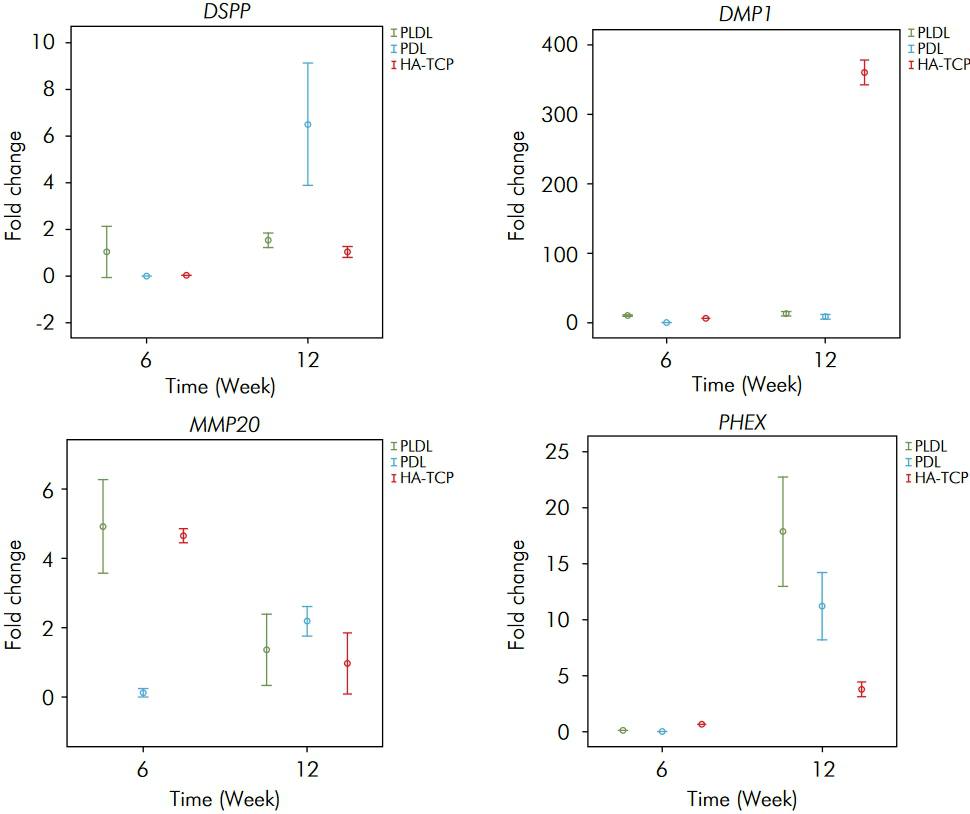Abstract
This study was designed to determine the in vivo performance of three different materials as scaffolds for dental pulp stem cells (DPSC) undergoing induced odontogenic differentiation. An odontogenic medium modified by the addition of recombinant human bone morphogenetic protein 2 was used in the experimental groups to induce differentiation. Mesenchymal stem cell medium was used in the control groups. DPSC were transplanted onto the backs of mice via three scaffolds: copolymer of L-lactide and DL-lactide (PLDL), copolymer of DL-lactide (PDL) and hydroxyapatite tricalcium phosphate (HA/TCP). The expression levels of dentin sialo-phosphoprotein (DSPP), dentin matrix protein-1 (DMP1), enamelysin/matrix metalloproteinase 20 (MMP20) and phosphate-regulating gene with homologies to endopeptidases on X chromosome (PHEX) were analysed using RT-PCR. The expressions in the experimental groups were compared to those in the control groups. The transcript expressions at 6 and 12 weeks were significantly different for all scaffolds (p < 0.05), except for the expression of DSPP in the PLDL group with regard to the time variable. Although there was a decrease in the expression of enamelysin/MMP20 in PLDL and HA/TCP at 12 weeks, all other expressions increased and reached their highest level at 12 weeks. The highest DSPP expression was in the PDL group (p < 0.05). The highest expression of DMP1 was detected in the HA/TCP group (p < 0.05). The highest expression of PHEX was in the PLDL group (p < 0.05). Consequently, PLDL and PDL seemed to be promising scaffold candidates for odontogenic regeneration at least as HA-TCP, when they were applied with the DPSC induced for odontogenic differentiation.
Dentistry; Regeneration; Dental Pulp

